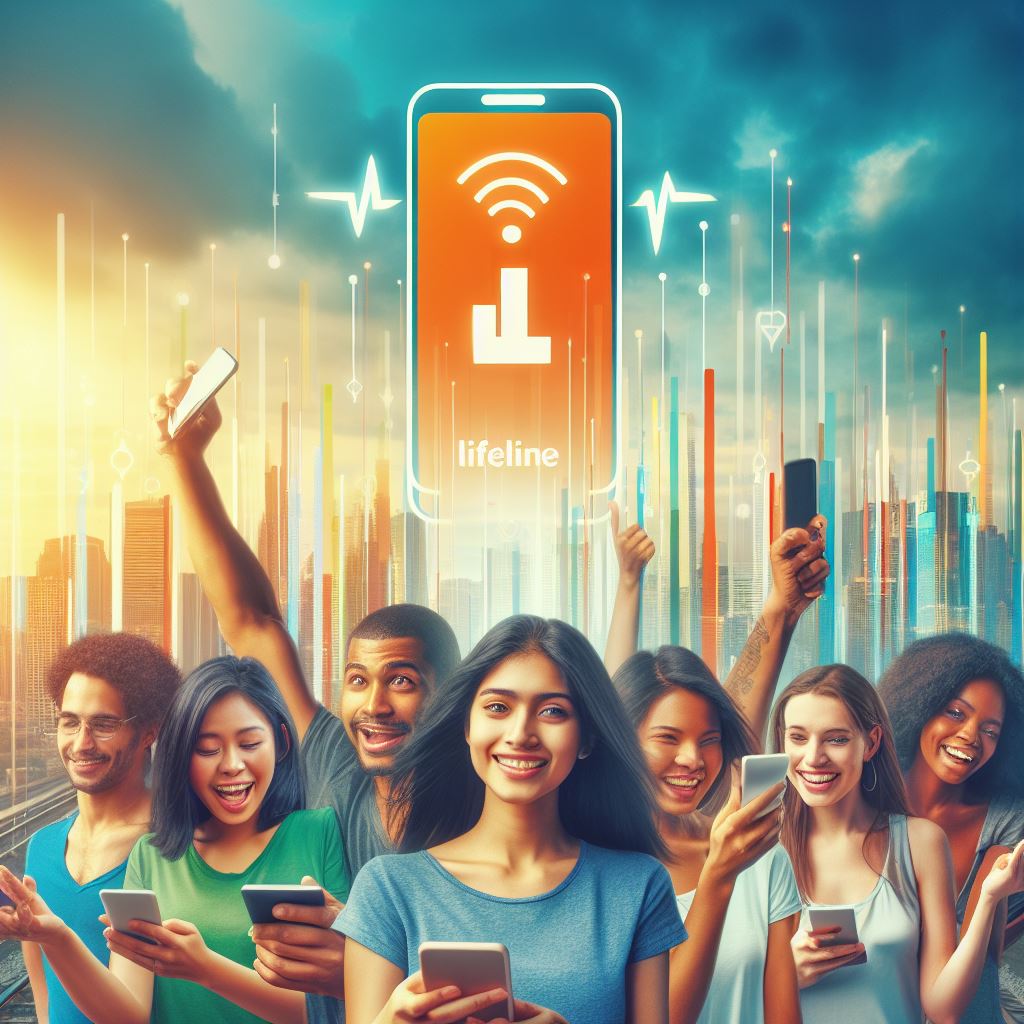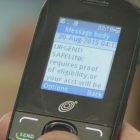Lifeline Mobile For Low-Income Consumers – What Do You Get?

Staying connected is essential to modern life. Unfortunately, not all Americans can afford phone and internet bills.
From people who have suffered economic loss and victims of natural disasters to veterans and their survivors, as well as seniors on fixed incomes ― there is a long list of those who can’t afford basic communications in the US.
The good news is that the Federal Communications Commission (FCC), through the Lifeline Assistance program, has made phone and internet services more accessible for people with low income or those whose income has taken a temporary nosedive due to unfortunate circumstances.
If you or someone you know needs help paying for phone or internet service, this article explains everything the Lifeline mobile program offers.
What Is Lifeline?
The Lifeline Assistance program is an FCC program established to help low-income American consumers afford communication services. The program is administered across the nation by the Universal Service Administrative Company (USAC).
Households that meet certain income limits can get government-subsidized monthly phone service, bundled voice-broadband packages, and internet service from service providers participating in the Lifeline Assistance program.
Participating providers are communication companies that receive a federal government subsidy to offer qualifying consumers phone and internet services. Eligible consumers can enroll in the Lifeline Assistance program through providers in their states to receive benefits.
Lifeline is available in all states, territories, tribal lands, and the commonwealth, making it easy for eligible low-income consumers across the nation to access essential healthcare services, educational resources, and job opportunities.
Besides subsidizing phone and internet services, some participating communication companies offer free phones to qualifying consumers. This way, subscribers can stay connected to family, friends, and the important things in their lives at no cost.
What Do You Get From Lifeline Service Providers?
The primary goal of the Lifeline Assistance program is to provide a subsidy that allows greater accessibility to cell phone and internet services for qualifying low-income consumers. However, the exact service you get will vary, depending on which service provider you subscribe to.
Generally, subscribers can expect the following benefits from the Lifeline Assistance program.
Free Device
Although the federal government does not give free phones to low-income consumers, participating companies in the Lifeline program may offer smartphones to eligible subscribers free of charge.
The free device you get will depend on your service provider. While you may not get the latest phone on the market, many participating companies offer Android smartphones and Apple iPhones, including:
- Samsung Galaxy S9 Plus
- Samsung Galaxy A10E
- Apple iPhone 6, 6 Plus, iPhone 6s, and 6s Plus
- Apple iPhone 7 and 7 Plus
- Apple iPhone 8
- Apple iPhone SE
Qualifying low-income consumers may also receive free hotspot devices to surf the internet. Those who prefer can get free SIM cards and receive free services on their existing phone.
Free or Discounted Service
Subscribers can get up to a $9.25 discount on phone and internet service every month. Those who live on tribal lands can get up to a $34.25 monthly discount on services. The discount can be applied to a wireless or wireline service.
Depending on the Lifeline provider you subscribe to, you can receive free phone and broadband service every month. Cell phone service typically includes voice minutes, text, and data.
Some companies offer additional services, such as:
- Free 911 service
- Free voicemail
- 3-way calling
- Caller ID service and call waiting service
Additionally, you can purchase extra service plans when you run out before the month ends.
Bonuses
Many Lifeline mobile providers offer incentives aimed at encouraging subscribers to stay active. Bonuses may include gift cards, extra credits, discounts on Amazon Prime purchases, and more.
Important Lifeline Rules
To avoid abuse, the FCC has the following strict rules for all Lifeline subscribers, regardless of the service provider.
- Subscribers must use the service at least once every 30 days to continue receiving benefits. Your phone or internet service will be terminated if you do not call, text, or surf the internet from your free or discounted phone, SIM card, or hotspot device once a month.
- Only one designated person or account can receive Lifeline benefits per household.
- While subscribers can apply discounts to a wireless or wireline service, they cannot receive free or discounted service on both.
How to Qualify for Lifeline
You may qualify for Lifeline if your household income is no more than 135% of the Federal Poverty Guideline.
If you meet this income limit, you will have to provide proof of income eligibility when applying for Lifeline. The proof can be one of the following documents:
- Pay stub
- Income statement from current employer
- Pension/Retirement benefits statement
- Social Security benefits statement
- Veterans Administration benefits statement
- Federal or state income tax return from the previous year
Another way to qualify for Lifeline is by participating in a government assistance program like the Supplemental Nutrition Assistance Program (SNAP), Supplemental Security Income (SSI), Federal Public Housing Assistance, Medicaid, or Veterans and Survivors Pension Benefit.
You may also be eligible for Lifeline if you participate in certain Tribal programs like Tribal Head Start, Tribally-Administered Temporary Assistance for Needy Families, Bureau of Indian Affairs General Assistance, or Food Distribution Program on Indian Reservations.
If you participate in any of these Lifeline-qualifying programs, you will need to provide proof of program participation, which include one of these documents:
- Award letter from the government program to show that you receive government assistance.
- Verification and approval letters from the government assistance program.
How to Apply for Lifeline
First, use the National Verifier application system to check if you qualify for Lifeline benefits. The National Verifier is the FCC’s centralized system designed to verify whether applicants are eligible for Lifeline. It is also the tool for recertifying recipients’ eligibility each year.
The National Verifier will collect your information and enroll you in the Lifeline Assistance program if you qualify.
Alternatively, you can visit your preferred Lifeline mobile provider’s website and sign up for the benefits program.
Choosing a Lifeline Service Provider
Lifeline providers do not offer the same phone and internet service plans, so choosing a telecoms company that meets your needs is important.
Consider the following when choosing a Lifeline mobile service provider.
- Availability: Some Lifeline providers are unavailable in some states, so choose a provider with coverage in your area. You can visit the Lifeline Support website and use the “Companies Near Me” tool to search for providers offering Lifeline discounts in your area.
- Free phone: Not all telecom companies offer free phones. If you want a free phone, it is best to choose a provider that offers free devices.
- Option to bring your own phone: Some providers offer free SIM cards for eligible consumers who want to receive Lifeline benefits on their existing phones. Others don’t support this option. Choose a provider that supports the “bring your own phone” option if you want to keep your current phone.
- Service plans: Remember to compare the service plans and features when choosing Lifeline providers. Besides free or discounted monthly talk, text, and data, some companies offer free international calling to selected countries, roaming, 911, voicemail, and caller ID services. Also, some providers have plans combining Lifeline benefits with the Affordable Connectivity Program (ACP), giving consumers unlimited free monthly service.
Top Lifeline Service Providers
1. Assurance Wireless
Assurance Wireless is one of the largest Lifeline service providers in the nation, serving more than 40 states. Eligible subscribers can get free devices and free monthly phone service.
To receive Lifeline benefits through Assurance Wireless, you must use a phone provided by the company.
2. SafeLink Wireless
SafeLink Wireless provides free and low-cost wireless phone service in many states, including Indiana, Illinois, Utah, and New York.
Besides free monthly unlimited talk, text, and data, SafeLink Wireless offers eligible Lifeline consumers free phones and SIM cards for those who want to keep their current phones.
3. Cintex Wireless
Cintex Wireless is available in several states and Puerto Rico. In addition to free phone and internet services, qualifying low-income households can get Apple iPhones and Samsung Galaxy phones for free. You can purchase a combination of tablets and smartphones for a subsidized price of $10.01.
4. TruConnect
TruConnect provides phone service in 37 states, the US Virgin Islands, and Puerto Rico. Qualifying households receive free monthly talk, text, 6GB of high-speed data, and calls to selected international destinations.
Consumers can get free SIM cards and receive government-subsidized phone service on their current phone.
5. StandUp Wireless
Providing Lifeline mobile service to eligible consumers in over 30 states, StandUp Wireless is one of the most popular providers in America. Subscribers receive monthly free talk minutes, text, and high-speed data over the T-Mobile, AT&T, Verizon, and Sprint networks.
Eligible low-income consumers may get free phones, and those who prefer can bring their compatible devices, provided they are unlocked.

